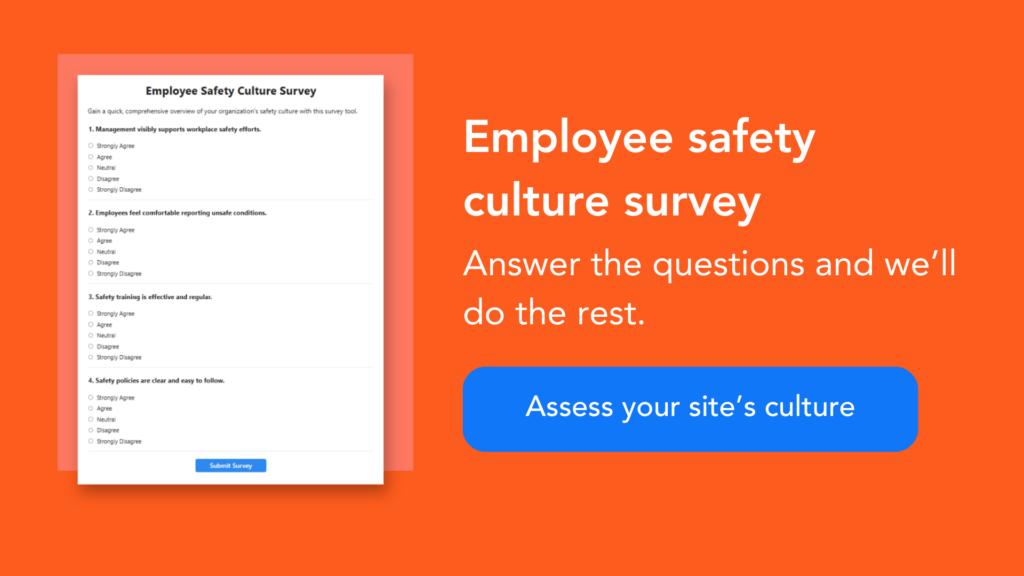Although the incident investigation process applies to near misses, many companies do not proactively investigate them. But reporting and investigating these events is a worthwhile process that will help you create a safer, more efficient workplace in the years to come. In this post, I’ll share some examples of near misses that you can reference for your own investigations.
What is the Definition of a Near Miss?
A near miss is any incident that doesn’t result in injury or damage but has the potential to, given a slightly different set of variables. Because near misses don’t cause an immediate issue, it’s easy to brush them off and keep moving forward.
But reporting and investigating near misses is essential for the safety and well-being of your workers. These types of incidents can provide you with important information on areas of opportunity within the workplace. When it comes to incident prevention, near misses are one of the most valuable tools you have.
What is the Format of a Near Miss Report?
The OSHA recordkeeping standard applies to injuries, illnesses, and fatalities, so you don’t need to report near misses. But for internal recordkeeping purposes, you can use a similar format for near-miss reports, with more of an emphasis on action items.
In general, here is the information you should include in a near-miss report:
- Date, time, and location of the incident
- Department
- Incident description
- Root cause (behavior, equipment, etc.)
- Supporting documents (photos, hazard analyses, etc.)
- Next steps and specific action items
Anyone reading a near-miss report should be able to understand exactly how and why an incident occurred. And you’ll want to make sure to store these documents so they’re easily accessible. Many sites use an EHS software system to upload their reports, including supporting evidence like photos and risk assessments.
What are Some Examples of Near Misses?
Near misses can vary greatly depending on the type of workplace. They can include everything from equipment malfunctions to worker-to-worker violence. Some categories of near misses that you might deal with in the workplace include:
- Mishandling of chemicals or hazardous materials
- Transportation close calls
- Equipment malfunctions
- Slips, trips, and falls without injury
- Signage-related incidents
- Narrow escapes from workplace hazards
Below are 10 examples of near misses that you might encounter in the workplace.
- A PIT driver runs into the side of pallet racking without causing damage.
- A worker trips over discarded boxes on the floor without sustaining an injury.
- Two workers throw tools across the workspace to each other and nearly hit a coworker.
- A PIT driver runs through a stop sign in the aisle and nearly hits a repair technician.
- A supervisor sees a worker on a platform without their fall harness hooked up.
- A heavy tool falls from its storage location and almost hits a worker in the head.
- Someone extinguishes a small fire in a hot work area before it causes injury or property damage.
- A team member notices a worker walking through the trailer yard without a high visibility vest.
- A forklift driver loses control, knocking over product without hitting any workers.
- A worker loses their glove while trying to fix a conveyor without turning off the power.
Document Everything You Can
A best practice to follow is to document everything even if you’re not exactly sure how to categorize it. Remember, the point of recording near misses is to gather information for internal use.
The key is following up on near misses to identify the root causes. Use the 5 why root cause analysis technique if you’re struggling to determine the issue. Once you’ve found it, you can use the near miss to create a control measure that prevents it from happening again. These examples of near misses can help your team begin addressing this critical area of risk mitigation.




